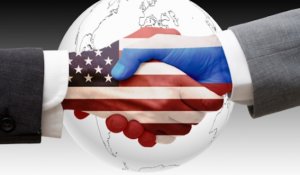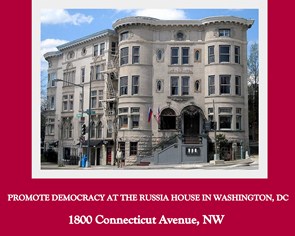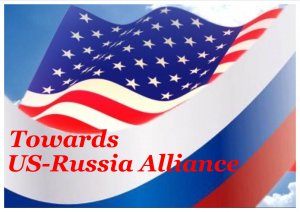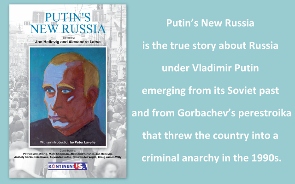M.K. Bhadrakumar
MK Bhadrakumar served as a career diplomat in the Indian Foreign Service for over 29 years, with postings including India’s ambassador to Uzbekistan (1995-1998) and to Turkey (1998-2001). He writes the “Indian Punchline” blog and has written regularly for the Asia Times since 2001.
Over the past decade or so, the annual India-Russia summit meetings have tended to become boring events – like a jaded marriage drained of romance. However, this year’s, slated for the weekend on the sidelines of the BRICS summit in Goa, promises to be exciting.
To continue with the metaphor, one of the partners has been seen as consorting with an unsavory character and the discovery of the dalliance has overnight electrified the wedlock. The partners are called upon to make an existential choice – rediscover their old mutual ardor comes to terms with the new reality.
This would just about sum up the dilemma of Prime Minister Narendra Modi and Russian President Vladimir Putin.
No doubt, the recent Russian-Pakistani military exercise signifies a quickening of the ‘thaw’ in the relations between the two countries in recent years.
It was slow in coming and Indians shouldn’t have been taken by surprise – except that in their obsessive focus on their partnership with the United States, they had taken the eye off their ‘time-tested’ friend, Russia.
Ironically, it is also the pro-US lobbyists ensconced in Delhi’s think tanks, including some former diplomats, who appear most perturbed today that Russians have ‘cheated’ on India. This is not surprising. Russia has become a factor in India-US relations. This is one thing.
What gives impetus to Russia-Pakistan relations? Three main reasons can be identified.
First and foremost, Russia cannot afford to overlook the centrality of Pakistan in relation to the upcoming struggle against the Islamic State in Afghanistan and Central Asia, which also happens to have a geopolitical dimension, given the US’ strategy of ‘encirclement’ of Russia with hostile entities.
Simply put, Russia feels the compulsion – rightly or wrongly – to neutralize the US’ capacity to create security threats.
While for India, IS could still be an esoteric phenomenon, for Russia it is a monster in flesh and blood. In the Russian estimation, IS cadres in Afghanistan have exponentially increased from 100 in number to 10,000 in just this past year.
The Kremlin’s special envoy Zamir Kabulov pointed out recently that the "Afghan branch of the IS is definitely specialized against Central Asia. Russian is even one of their working languages. They are being trained against Central Asia and Russia.”
Second, Pakistan is about to enter the Shanghai Cooperation Organization (SCO) as full member, which requires Russia to create new security underpinnings with that country. Delhi is slow to grasp that SCO membership is going to put similar obligations on the Indian army too to hold military exercises with the Pakistani army on regular basis.
Third, Russia has traditionally kept an eye on developing business ties with Pakistan. Suffice it to say, Karachi Steel Mills was built with the contributions of the Soviet Union in the seventies, during the halcyon days of Soviet-Indian friendship.
Quite obviously, it is not lost on Moscow that Pakistan is becoming a hugely interesting economic partner once the US$46 billion China-Pakistan Economic Corridor gains traction and new market conditions appear in the region.
The heart of the matter is, Moscow does not see any contradiction here in terms of its relations with India. Neither does Russia make any demands on India to cool down its ardor for the US nor will it countenance any attempt by India to add caveats to its regional policies. An analogy exists.
Both the US-Indian ‘defining partnership of the 21st century’ and the Sino-Russian ‘comprehensive strategic cooperation and partnership’ are at their all-time high level historically.
Yet, US-Russian relations are touching a new Cold War level and the Sino-Indian relations are caught up in a ‘competition-cum-cooperation’ syndrome.
It’s just as well that Russia and India do not make exacting demands on each other in regard of the strategic choices they make in a highly volatile regional and international environment.
Paradoxically, this is not too difficult an equilibrium to reach, because in both India and Russia, it is the ‘westernists’ who in any case happen to dominate the post-Cold War strategic discourse.
Having said that, Russia-Pakistan military exercises have served a useful purpose. Unwittingly, perhaps, Moscow administered a ‘shock therapy’ to the Indian ruling elites, reminding them that strategic ties need constant nurturing and even benign neglect could have deleterious consequences over time.
To be sure, one thing about the Delhi durbar is that everything works top-down. Once the emperor cracks the whip, the retinue scrambles. Thus, in record speed, Delhi has assembled a movable feast for Putin.
An agreement has been finalized on a US$4.5 billion deal to buy Russia’s S-400 ABM system; fresh life may be breathed into a potential US$6 billion deal that was moribund to jointly develop with Russia a fifth-generation fighter aircraft; an $1 billion deal will be implemented to produce in India Kamov 226T light utility helicopters; an agreement will be signed for the construction of two more nuclear power plants costing anywhere around $30 billion; decision will be taken to lease a second Akula-class Russian nuclear attack submarine at a cost of $1.5; and, a multi-billion dollar deal may be swung for four Admiral Grigorovich-class guided missile stealth frigates from Russia (outright purchase of 2 and co-production of two more in India.)
Putin’s passion for adventure sports is legion. Goa would have been terrific for surfing if the BRICS summit had been planned a couple of months earlier when there were big waves and the surf would range up to 15 feet or even bigger – with super glassy offshore winds and world class waves.
The big swells have declined by October. Nonetheless, Modi has ensured that this October visit to Goa promises to be exciting for Putin.
India is enveloping Russia with rings of engagement that neither China nor Pakistan could possibly match.
Of course, such engagement restricted to defense and energy would have limits, when systemic deficiencies continue. Incredibly enough, Russian-Indian bilateral trade is still struggling beneath the $10 billion water mark. (India’s trade with China or the US would be six or ten times bigger respectively.)
However, the mother of all ironies is that it will not be Beijing or Islamabad that would have cause to worry as much as Washington could be.
The Reuters reported only ten days ago that US Defense Secretary Ashton Carter is planning one more visit to India in the final months of the Obama administration, "eager to get as much done as humanly possible” by way of arms deals, predicated on the assessment that "the conditions and the personnel in both capitals are uniquely favorable at the moment, and are eager to consolidate and institutionalize the progress” in the US-Indian arms deals.
According to Reuters, the US "has dislodged Russia as the top arms supplier to India”.
Did it speak too soon?
For the present, the Modi-Putin meeting in Goa is all set to underscore that India-Russia defense ties remain as robust as ever.
What cannot be overlooked is that India-Russia relationship, like any other profound relationship between two vastly different countries, has had its ups and downs but ultimately the trust and mutual confidence remained as its bedrock.
In a world wracked with uncertainties and hidden dangers, they have high stakes in the relationship. India’s ties with China are under stress while the tensions with Pakistan are cascading.
For Russia, too, it is no small matter that India showed understanding over its annexation of Crimea or is supportive of the war in Syria.


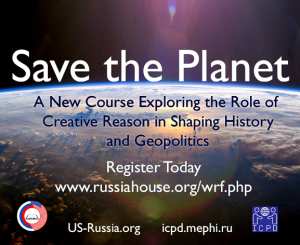
_jpg/250px-ElbeDay1945_(NARA_ww2-121).jpg)
